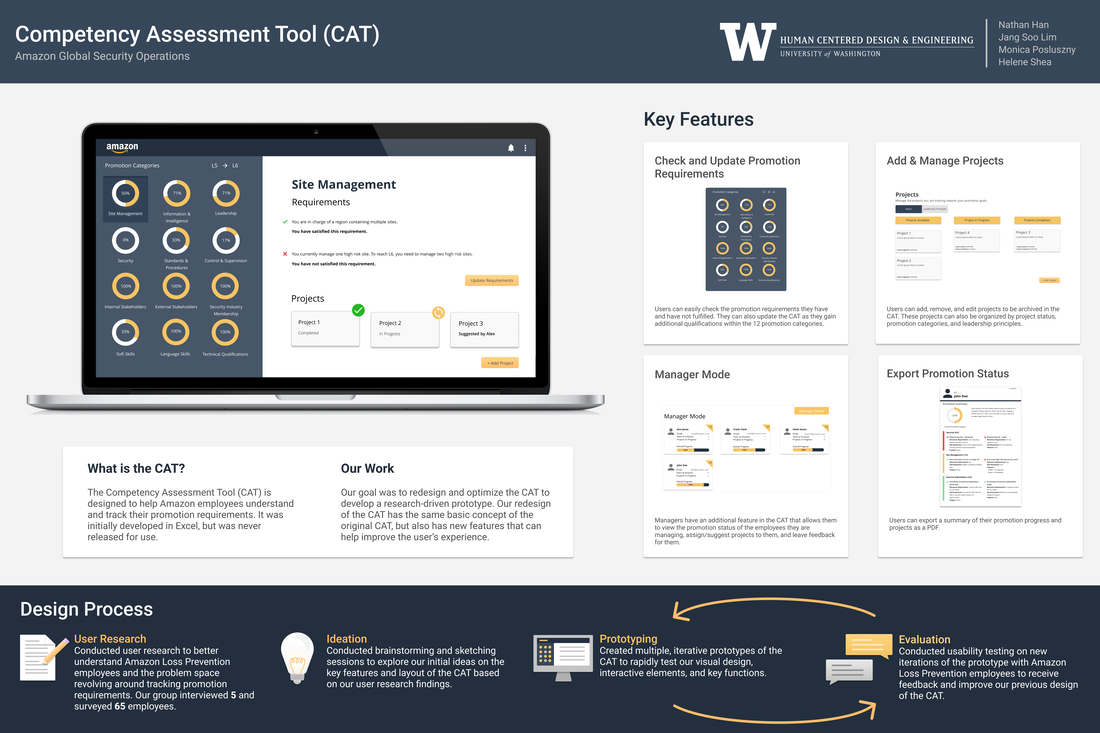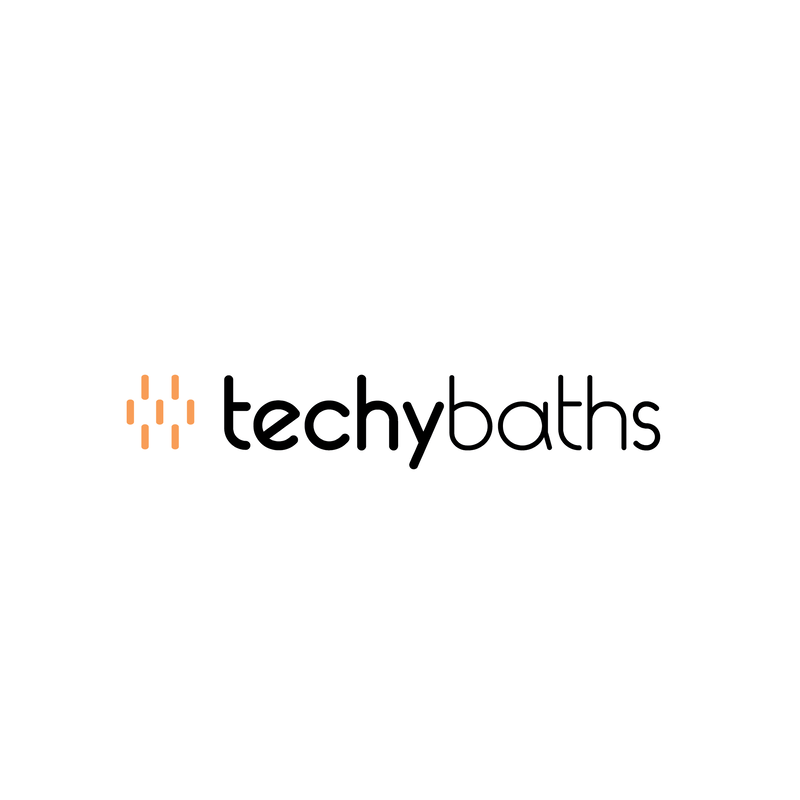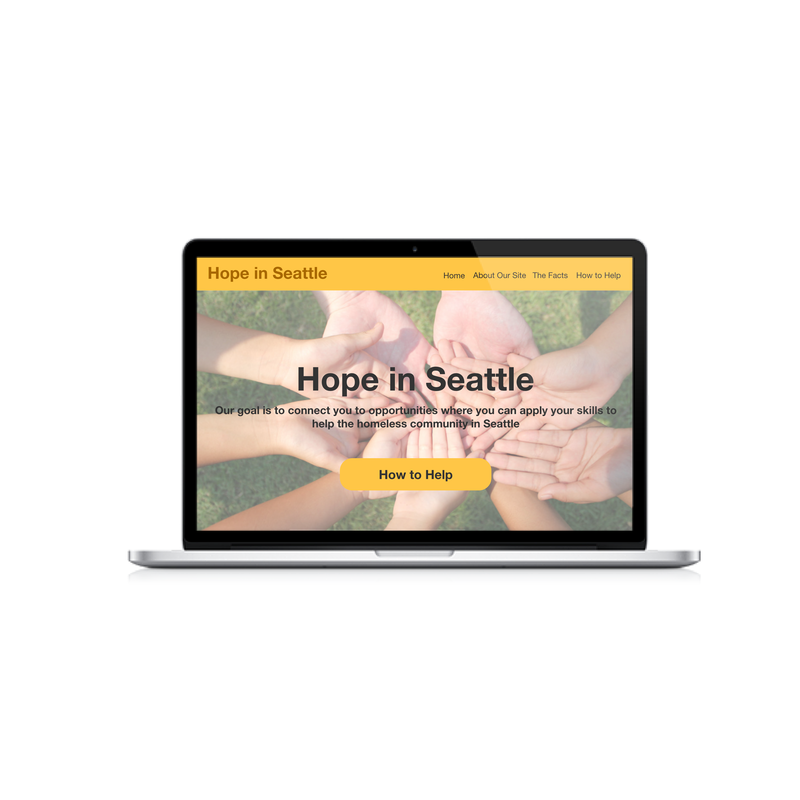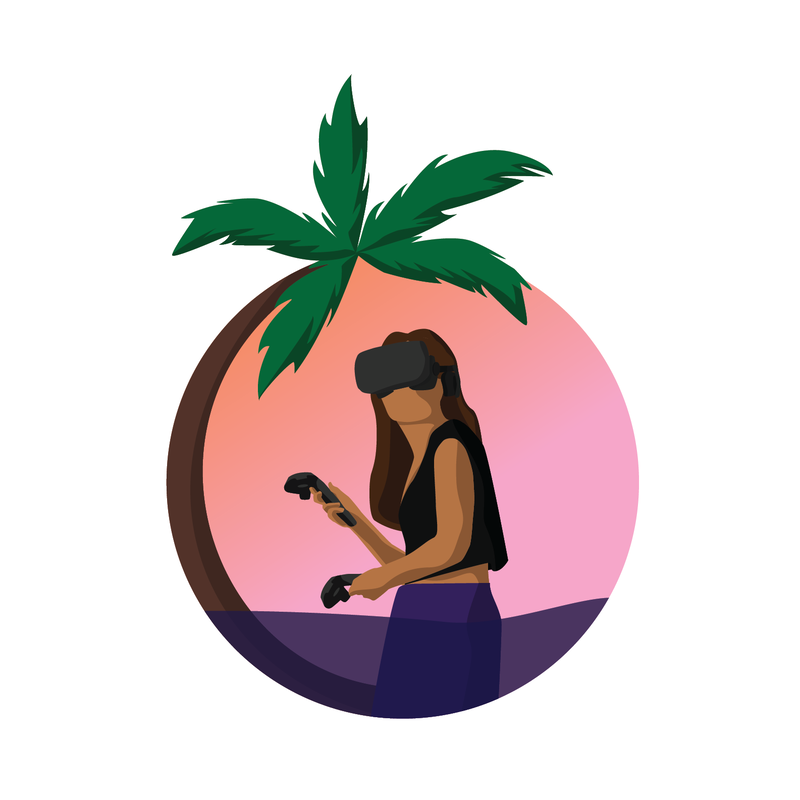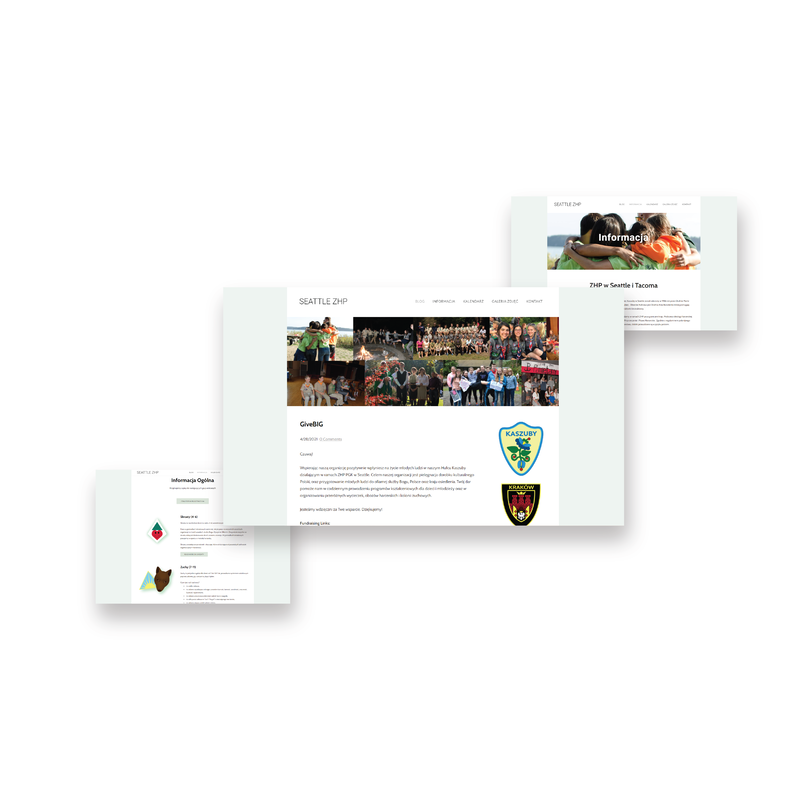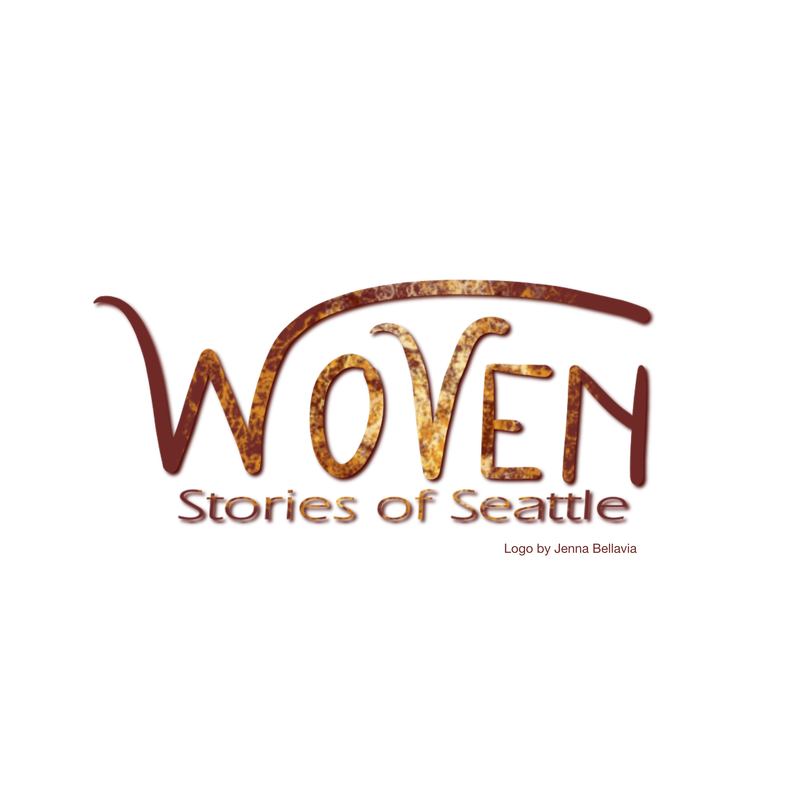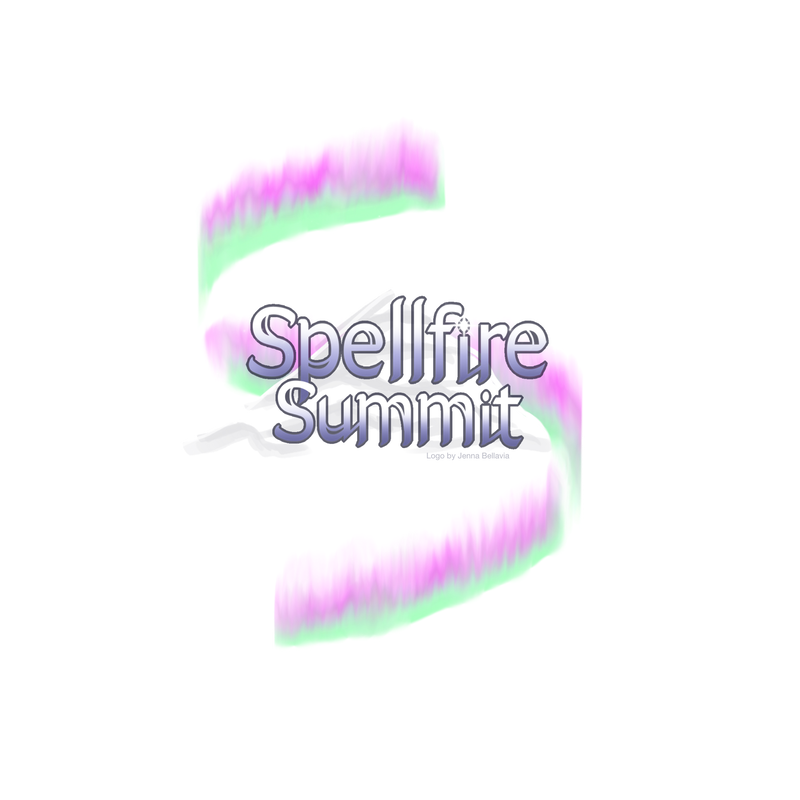I created our team video in After Effects. I recommend slowing down the video speed to .75 to make reading the text easier!
ResearchOur main research question: How can the CAT be redesigned to clearly define promotion requirements while also motivating Amazon Loss Prevention employees to plan and achieve their career goals?
Since there was no previous research done on the tool, my team and I set out to fully understand Amazon's promotion process and the desires and pain points of LP employees when seeking a promotion. We did this through 5 semi-structured interviews to gain insights and by running a survey to solidify our results.
Key Results
IdeationOur team spent time ideating separately and in-person. We debated various features such as dashboard layouts, whether we should we keep the original Excel file categories or not, how to show promotion progress, and whether we should include a way to track projects.
Paper PrototypeOur next step was to agree on an initial paper prototype. One of our primary design goals was for LP employees to easily navigate this tool and see at a glance what their status was in regards to their promotion, so we kept the CAT assessment divided in the original 12 categories and used donut charts to show the level of completion for each category.
It's important to note that this tool seeks to prepare employees to be eligible for a promotion but does not guarantee one. This is one of the reasons why incorporating manager communication into the design was important since they are a deciding factor whether an employee receives a promotion. The images and slideshow below describe our initial prototype. Usability TestingAfter running two usability tests (where I contributed with facilitation, notetaking, and led a meeting with our sponsors), we discovered one of our most important findings that changed the direction of our project which was that the promotion process was based off of Amazon’s Leadership principles. Our design has the ability to track projects and to print PDF summaries of progress with project notes (which is beneficial for bringing into interviews). We realized that it would make interview preparation for a promotion easier if projects could be marked with what leadership principle the candidate showcased.
Since fulfilling all these requirements still does not guarantee a promotion, one other important change was limiting the number of categories a project can fall under to ensure quality and quantity of projects. Limiting categories will ensure the quality of the employee’s skills when they try to get a promotion, as they will need many projects to fulfill requirements. Aside from those two major finds, we made many smaller changes highlighted in the images below. We also confirmed that participants did like being able to see progress at a glance with the categories laid out in donut charts. 1st High Fidelity PrototypeFinal High Fidelity Prototype |
ReflectionI have thoroughly enjoyed working on this project. I learned a lot and I realized how much confidence I have gained in conducting the UX design process throughout my time in the HCDE program. I felt like my ability to vouch for different ideas grounded in user research increased. I can’t say I felt like that 100% of the time but my team and I used our best judgement to make decisions that worked for our users.
I wish I could’ve ideated more (though I still did a lot)! One of my fears that I have to work through is the whole ”there's no such thing as a bad idea” concept in early ideation phases. I know this is true because even if we don’t go with an idea, new ideas can be built off of it through the brainpower of the team! Also, from my experience with the testing results and interviews, having more than 5 participants seems to be ideal to find patterns in the research. We went with 5 interviews initially because of time constraints, however more people would've have solidified our findings. Additionally, I learned to just make a decision. You could endlessly debate all aspects of a design, what works and what doesn’t, etc., but in the end you just have to choose something and test it. It won’t always be perfect and you won’t always please everyone in the end. |

